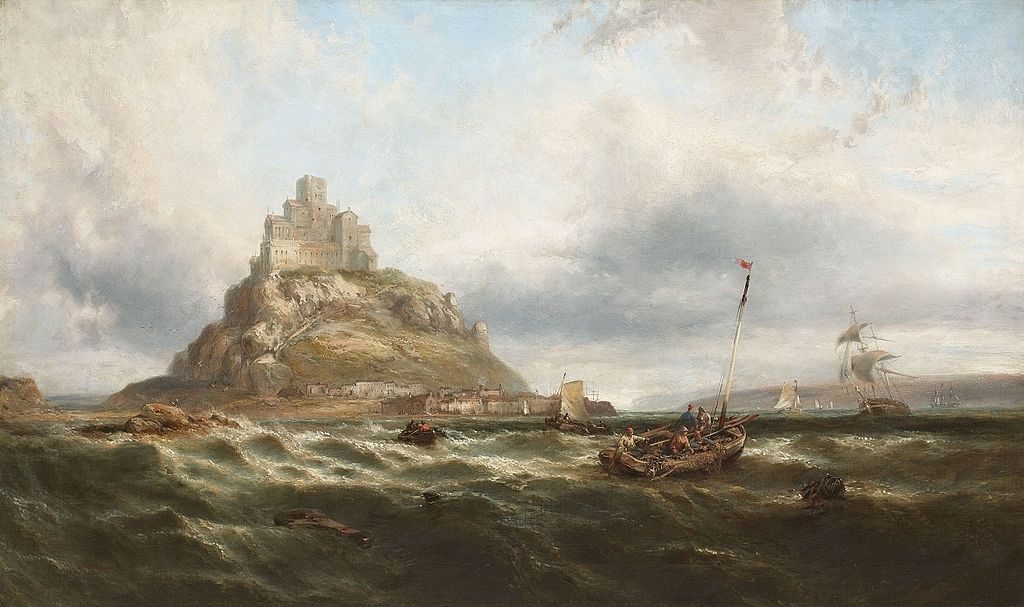Continuing our series on the legendary “Sword of St. Michael,” we now turn to tradition and see what ancient Jews and Christians believed about the holy archangel.
[featured-image single_newwindow=”false”]
We have already seen from the canonical scriptures that St. Michael was sent to earth as a protector and warrior, but the Jews had additional roles for this angelic being that were passed down through the centuries.
In fact, there is one role that they assigned to him that may be the missing link we are looking for.
Before examining the various roles of St. Michael, it is important to pause for a second and look at his name, which also tells us much about his mission on earth. His name in Hebrew is Mikha’el, and is translated as “Who is like God?” It is believed to be both an affirmation as well as a battle cry, challenging Satan to respond and recognize that there is no one who is like God, except God himself.
Across ancient Jewish literature there are three primary roles assigned to St. Michael. First of all he is believed to be an angel with great intercessory power, able to intercede on behalf of humanity. Secondly, St. Michael is seen as a guardian and protector of the Jewish people as a whole. And last of all, the archangel plays a vital role in the individual judgement of souls as well as the final judgement at the end of time.
Included in these roles are particular assignments. For example, the Golden Legend relates how, “It is said that it was he who inflicted the plagues on the Egyptians, divided the Red Sea, led the people through the desert, and ushered them into the Promised Land.” Essentially whenever something important happened, St. Michael was there with the people of Israel.
This portrayal of St. Michael comes from writings such as the book of Enoch, Testament of Abraham and other writings. Enoch in particular was a popular source both in Jewish and early Christian communities.
The various writings that comprise the book of Enoch were written between 300 – 100 BC and were never included either in the Hebrew Scriptures or Christian Bible. This is because while there is much in the writings that complements scripture, there is more in it that is often at odds. For these and other reasons it is not believed to be fully inspired by God.
Yet, it was an important text in ancient Judaism and early Christianity that is even referenced in the Bible.
What’s interesting is that within the book of Enoch St. Michael is associated with seven mountains.
And I went beyond it and saw seven magnificent mountains all differing each from the other … And the seventh mountain was in the midst of these, and it excelled them in height, resembling the seat of a throne: and fragrant trees encircled the throne. And amongst them was a tree such as I had never yet smelt, neither was any amongst them nor were others like it: it had a fragrance beyond all fragrance, and its leaves and blooms and wood wither not for ever: and its fruit is beautiful, and its fruit resembles the dates of a palm. Then I said: ‘How beautiful is this tree, and fragrant, and its leaves are fair, and its blooms very delightful in appearance.’ Then answered Michael, one of the holy and honoured angels who was with me, and was their leader. (Enoch 1 24:2-6)
Essentially, St. Michael appears to be a protector of these seven mountains and the Tree of Life that is located on one of the mountains. The vision of Enoch is further described as an apocalyptic vision and explains how the Tree of Life was taken from Eden and placed on one of the mountains and will remain there until the end of time, from where God will judge all of creation.
The reason why this is of particular interest is that the “Sword of St. Michael” that we are investigating involves a line of seven monasteries on seven mountains and are all connected to St. Michael in some way.
Is this a mere coincidence? Or a heavenly sign? We will continue our journey next week by looking at the Christian traditions surrounding St. Michael and his mission to humanity.
Read More: This is why St. Michael was sent to earth

